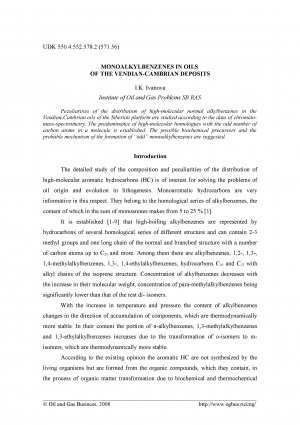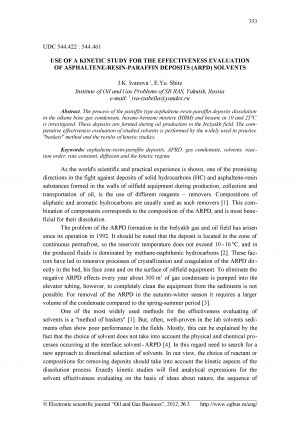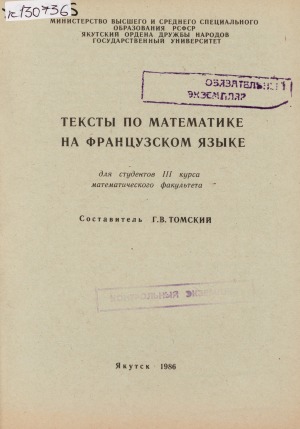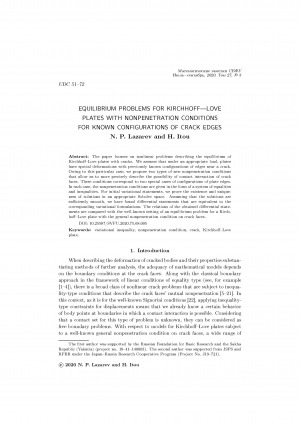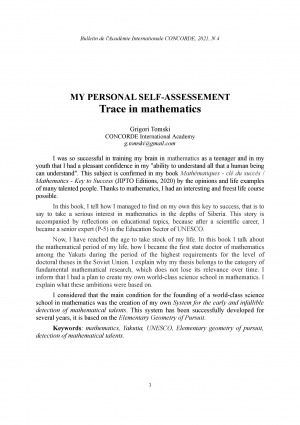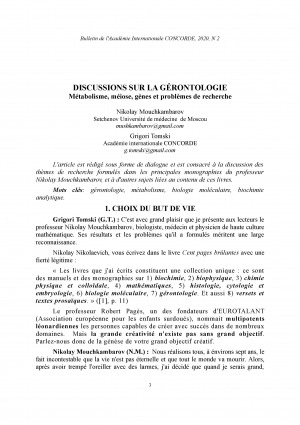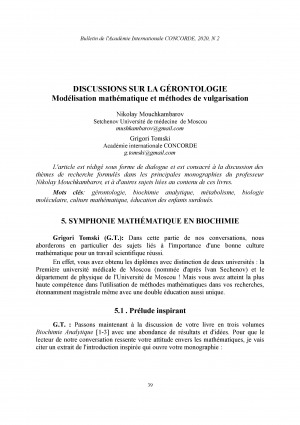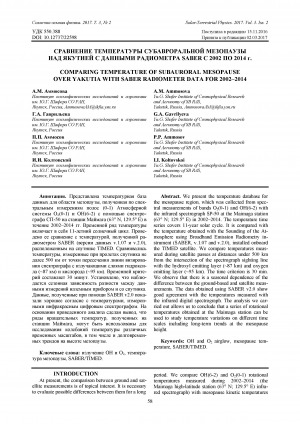Количество страниц: 10 с.
Ivanova, I. K. Monoalkylbenzenes in oils of the Vendian-Cambrian deposits / I. K. Ivanova // Нефтегазовое дело. - 2008, N 1. - С. 23.
Количество страниц: 8 с.
Ivanova, I. K. Use of a kinetic study for the effectiveness evaluation of asphaltene-resin-paraffin deposits (ARPD) solvents / I. K. Ivanova, E. Yu. Shitz // Нефтегазовое дело. - 2012, N 3. - С. 353-359.
Год выпуска: 1986
Количество страниц: 28 с.
Количество страниц: 14 с.
Lazarev, N. P. Equilibrium problems for Kirchhoff–Love plates with nonpenetration conditions for known configurations of crack edges / N. P. Lazarev, H. Itou // Математические заметки СВФУ. — 2020. — Т. 27, N 3 (107), июль-сентябрь. — С. 52-65
DOI: 10.25587/SVFU.2020.75.68.005
Издательство: ИЦ НБ РС(Я)
Год выпуска: 2022
Серия, номер выпуска: Электронные издания Национальной библиотеки Республики Саха (Якутия)
Количество страниц: 151 с.
Издательство: НБ РС(Я)
Год выпуска: 2022
Серия, номер выпуска: Электронные издания Национальной библиотеки Республики Саха (Якутия)
Количество страниц: 273 с.
Количество страниц: 64 с.
- Томский Григорий Васильевич > Труды, статьи,
- Математика. Естественные науки > Математика,
- Краеведение. Археология. География. Биографии. История > Биографии. Генеалогия. Геральдика,
- НАУКА ЯКУТИИ > МАТЕМАТИКА. ЕСТЕСТВЕННЫЕ НАУКИ > Математика,
- НАУКА ЯКУТИИ > КРАЕВЕДЕНИЕ. ГЕОГРАФИЯ. БИОГРАФИИ. ИСТОРИЯ > Биографии. Генеалогия. Геральдика.
Tomski, G. V. My personal self-assessement : trace in mathematics / Grigori Tomski ; CONCORDE International Academy // Bulletin de l’Académie Internationale CONCORDE. - 2021. – N 4. – С. 3-65.
Количество страниц: 36 с.
Mouchkambarov, N. N. Discussions sur la gérontologie : métabolisme, méiose, gènes et problèmes de recherche / Nikolay Mouchkambarov, Grigori Tomski // Bulletin de l’Académie Internationale CONCORDE. - 2020. – N 2. – С. 3-38.
Количество страниц: 20 с.
Mouchkambarov, N. N. Discussions sur la gérontologie : modélisation mathématique et méthodes de vulgarisation / Nikolay Mouchkambarov, Grigori Tomski // Bulletin de l’Académie Internationale CONCORDE. - 2020. – N 2. – С. 39-58.
Количество страниц: 6 с.
Comparing temperature of subauroral mesopause over Yakutia with SABER radiometer data for 2002–2014 = Сравнение температуры субавроральной мезопаузы над Якутией с данными радиометра SABER с 2002 по 2014 г. / A. M. Ammosova, G. A. Gavrilyeva, P. P. Ammosov, I. I. Koltovskoi // Солнечно-земная физика = Solar-Terrestrial Physics. – 2017. – Т. 3, N 2 : 13-я российско-китайская конференция по космической погоде. – С. 58-63. – DOI: 10.12737/22598.
DOI: 10.12737/22598
